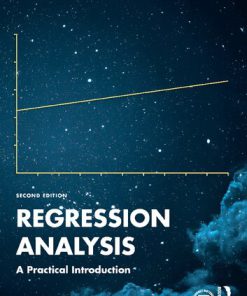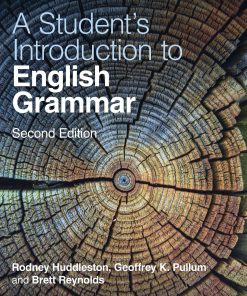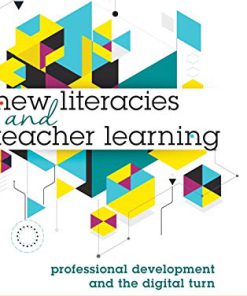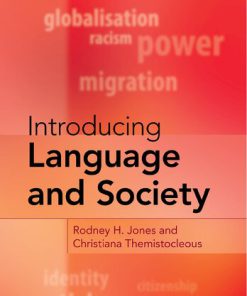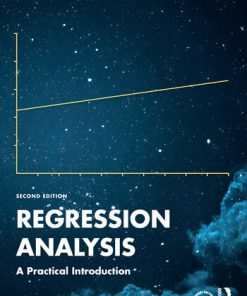Understanding Digital Literacies A Practical Introduction 2nd Edition by Rodney Jones, Christoph Hafner 1000394034 9781000394030
$50.00 Original price was: $50.00.$25.00Current price is: $25.00.
Understanding Digital Literacies A Practical Introduction 2nd Edition by Rodney Jones, Christoph Hafner – Ebook PDF Instant Download/Delivery: 1000394034, 9781000394030
Full download Understanding Digital Literacies A Practical Introduction 2nd Edition after payment
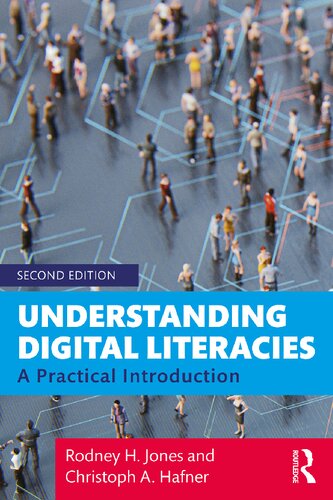
Product details:
ISBN 10: 1000394034
ISBN 13: 9781000394030
Author: Rodney H. Jones; Christoph A. Hafner
Understanding Digital Literacies Second Edition provides an accessible and timely introduction to new media literacies. This book equips students with the theoretical and analytical tools with which to explore the linguistic dimensions and social impact of a range of digital literacy practices. Each chapter in the volume covers a different topic, presenting an overview of the major concepts, issues, problems, and debates surrounding it, while also encouraging students to reflect on and critically evaluate their own language and communication practices. Features of the second edition include: • expanded coverage of a diverse range of digital media practices that now includes Instagram, Snapchat, TikTok, Tinder, and WhatsApp; • two entirely new chapters on mobility and materiality, and surveillance and privacy; • updated activities in each chapter which engage students in reflecting on and analysing their own media use; • e-resources featuring a glossary of key terms and supplementary material for each chapter, including additional activities and links to useful websites, articles, and videos. This book is an essential textbook for undergraduate and postgraduate students studying courses in new media and digital literacies.
Understanding Digital Literacies A Practical Introduction 2nd Table of contents:
1 Mediated me
Mediation
Case study: The wristwatch
Affordances and constraints
Activity: Affordances, constraints, and social practices
Creativity
Media utopias and dystopias
What are ‘digital literacies’?
How this book is organized
PART I Digital tools
2 Information everywhere
Activity: Finding information
Information and relationships
Ontologies: Organizing the world
Filtering
Case study: Search engines
Activity: Interrogating search engines
The attention economy
Activity: Attention in social media
Conclusion
3 Reading and writing in digital contexts
Hypertext and linking
Activity: Reading critically in hypertext
Dynamic hypertext
Case study: Facebook as dynamic hypertext
Clickbait or ‘You won’t believe what you’re about to read!!’
Is hypertext making you stupid?
Interactivity
Automatic writing
Mashups and remixing
Activity: Remix culture
Conclusion
4 Multimodality
From page to screen
Activity: Sign language?
Interfaces
Case study: Multimodal design in Instagram
Visual design in multimodal texts
Combining modes
Activity: Text/image interaction in image macro memes
Designing video
Conclusion
5 Online language and social interaction
Activity: Analyzing language on different platforms
Media effects
Activity: Textual chemistry
User effects
What are we doing when we interact online?
‘Phatic’ communication
Case study: Chatbots
The richness of lean media: Mode-mixing and mode-switching
Conclusion
Mobility and hybrid spaces
Locative media
Activity: Locativ6 Mobility and materialitye technologies
Placemaking with digital images
Embodiment
Case study: Why is Zoom so exhausting?
Materiality and the ‘Internet of Things’
Activity: Your Internet of Things
Conclusion
7 Critical digital literacies
Ideologies and imaginaries
Are technologies ideological?
Mediation redux
Case study: Algorithms
Activity: Folk algorithmics
Interfaces and dark patterns
Activity: Detecting dark patterns
Fake news
Who owns the internet?
Conclusion: ‘Hacking’ digital media
PART II Digital practices
8 Online cultures and intercultural communication
Online cultures as discourse systems
Activity: The cultures of social networking platforms
Light communities and ambient affiliation
Case study: Massively multi-player online games as online discourse systems
Cultures-of-use and media ideologies
Activity: Your media ideologies
Intercultural communication online
Tribalism and polarization
Conclusion
9 Games, learning, and literacy
Games and literacy
Activity: The games people play
Reading and writing in games
Case study: Virtual game worlds
Games and our material and social worlds
Games and identity
Games and learning
Activity: Boon or bane?
Conclusion
10 Social (and ‘anti-social’) media
We are not files
Social networks and social ties
Activity: Mapping your social network
The presentation of self on social networking platforms
Activity: Performance equipment
Case study: Influencers and microcelebrities
‘Anti-social media’
Conclusion
11 Collaboration and peer production
Collaboration in writing
Activity: Your collaborative writing practices
Wikinomics and peer production
Case study: The wiki
The wisdom of crowds
Memes and virality
Activity: The creation and circulation of memes
Conclusion
Notes
12 Surveillance and privacy
What is privacy?
Responses to privacy challenges
Activity: The ‘creepy scale’
Lateral surveillance
Pretexts
Entextualization
Case Study: Genres of disclosure
Activity: What do they know about you?
Conclusion
Notes
Afterword: Mediated Us
References
Index
People also search for Understanding Digital Literacies A Practical Introduction 2nd:
dimensions of digital literacy
digital literacies examples
what is literacy digital
using digital literacy in the classroom
Tags:
Rodney Jones,Christoph Hafner,Understanding Digital Literacies
You may also like…
Mathematics - Mathematical Statistics
Medicine
Introduction to Health Research Methods A Practical Guide 3rd ed 3rd Edition Jacobsen Kathryn H
Languages - English as a Foreign Language & Reference
Science (General) - Science of Science
Approaching Multivariate Analysis A practical introduction 2nd Edition Pat Dugard
Education Studies & Teaching - Special Education



